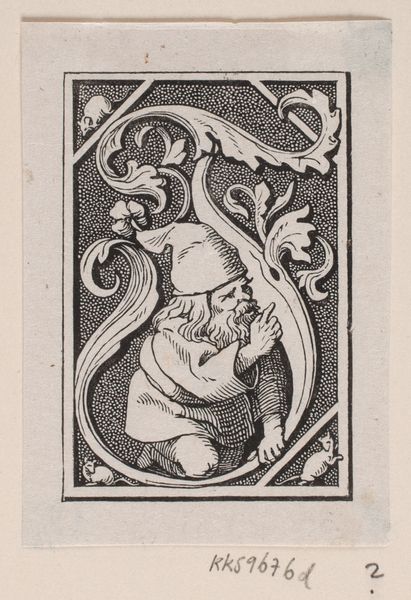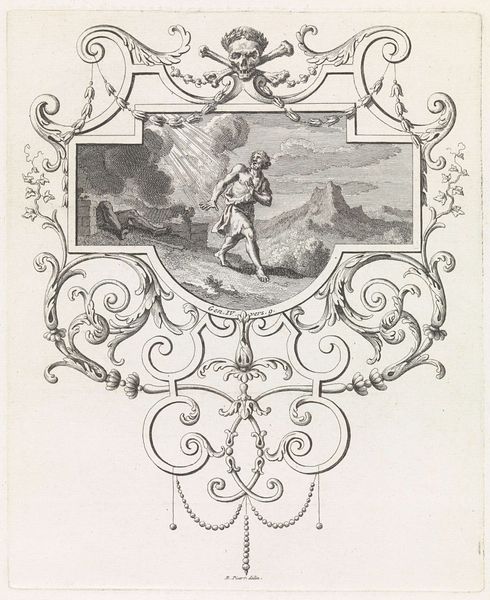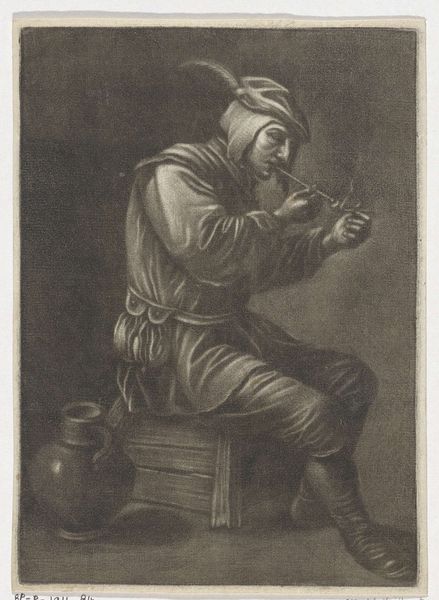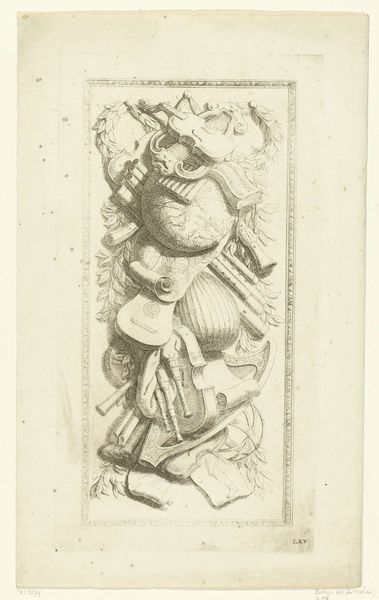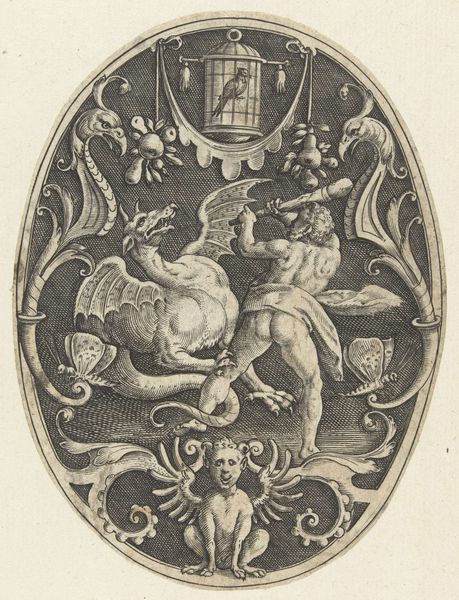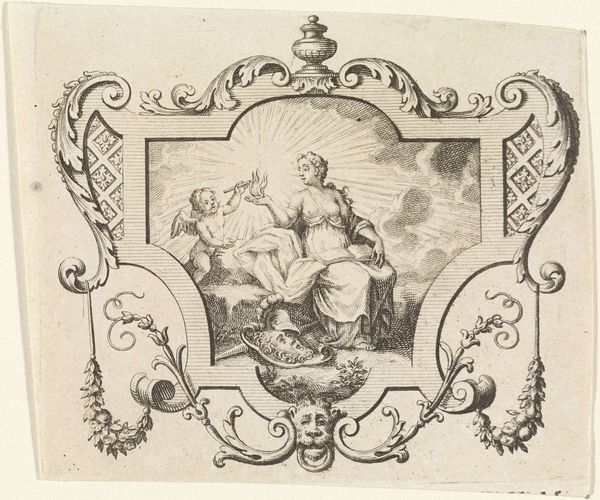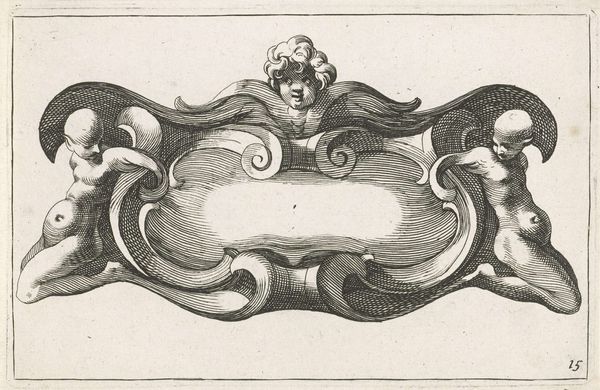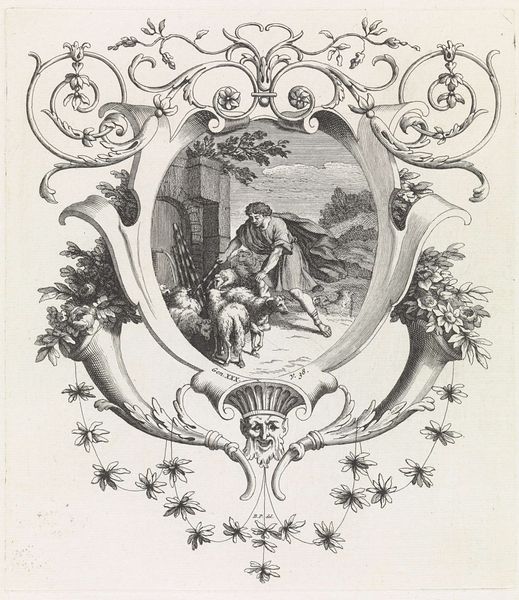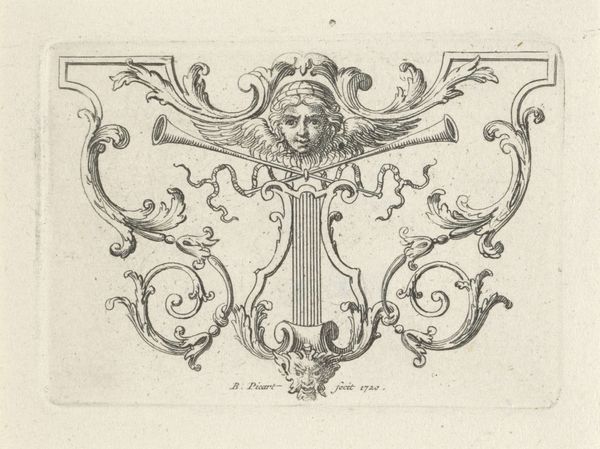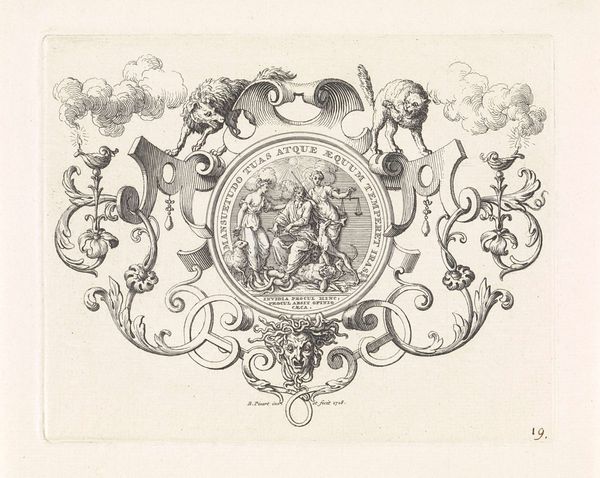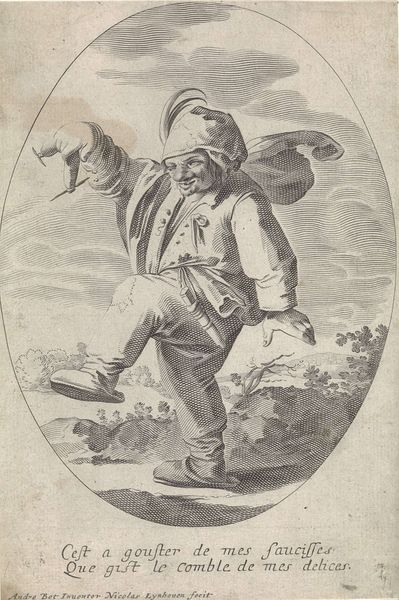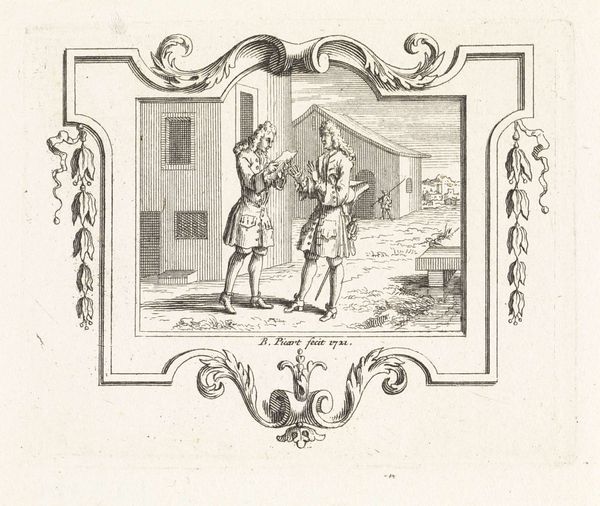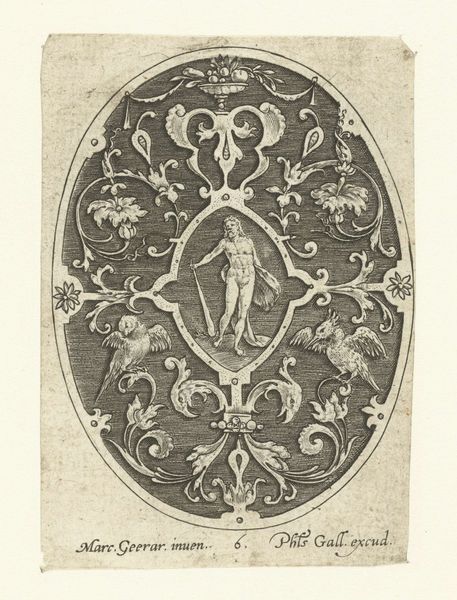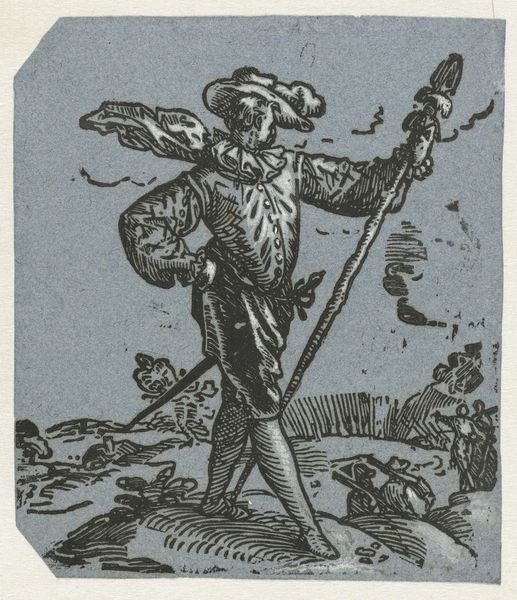
print, engraving
#
portrait
#
pencil drawn
#
dutch-golden-age
# print
#
figuration
#
portrait drawing
#
genre-painting
#
engraving
Dimensions: height 98 mm, width 140 mm
Copyright: Rijks Museum: Open Domain
Editor: Here we have Pieter Nolpe’s “Drinkende boer,” made sometime between 1623 and 1653. It’s a small engraving, depicting exactly what the title suggests—a farmer taking a long swig from a jug. It’s the kind of image that seems simple, but makes me wonder about the culture of the time. What stands out to you about this print? Curator: Well, let’s consider the material realities here. It’s an engraving, a relatively accessible medium in its day. Prints like these weren't unique objects displayed by wealthy elites, but goods made for circulation within a developing market economy. The subject matter, a “drinking farmer,” positions it further from the high-minded ideals typically associated with “art.” What kind of labor is being represented here? And for what audience? Editor: So, you’re suggesting this print isn't just a portrait, but an item intended for consumption. Does that affect how we should interpret it? Curator: Precisely. Think about who would buy this print. Was it meant for farmers themselves, or perhaps for a rising urban class fascinated (or maybe even mocking) rural life? The choice of engraving—a replicable medium—indicates a demand beyond a single, wealthy patron. The medium is the message. Editor: That makes me think differently about it. It's less a snapshot of a farmer and more a comment on the changing relationship between urban and rural life through a manufactured object. Curator: Indeed. The print becomes evidence of changing economic and social relationships, where even depictions of everyday life become commodities themselves. Editor: I see it now, framing this work through materials and production helps reveal hidden cultural dimensions. Thanks for your insights. Curator: My pleasure, always rewarding to uncover the labor embedded in what we see.
Comments
No comments
Be the first to comment and join the conversation on the ultimate creative platform.
